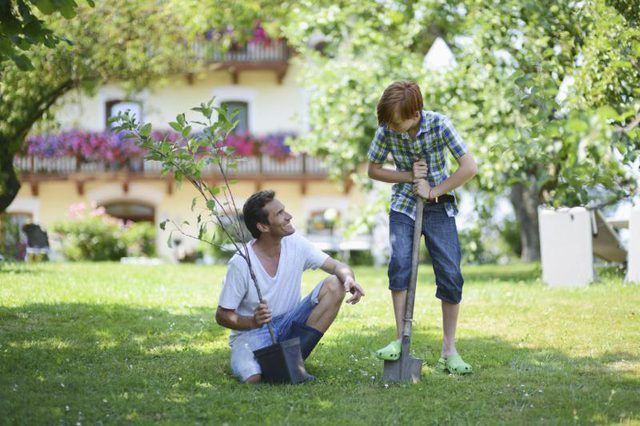Bulbs
Flower Basics
Flower Beds & Specialty Gardens
Flower Garden
Garden Furniture
Garden Gnomes
Garden Seeds
Garden Sheds
Garden Statues
Garden Tools & Supplies
Gardening Basics
Green & Organic
Groundcovers & Vines
Growing Annuals
Growing Basil
Growing Beans
Growing Berries
Growing Blueberries
Growing Cactus
Growing Corn
Growing Cotton
Growing Edibles
Growing Flowers
Growing Garlic
Growing Grapes
Growing Grass
Growing Herbs
Growing Jasmine
Growing Mint
Growing Mushrooms
Orchids
Growing Peanuts
Growing Perennials
Growing Plants
Growing Rosemary
Growing Roses
Growing Strawberries
Growing Sunflowers
Growing Thyme
Growing Tomatoes
Growing Tulips
Growing Vegetables
Herb Basics
Herb Garden
Indoor Growing
Landscaping Basics
Landscaping Patios
Landscaping Plants
Landscaping Shrubs
Landscaping Trees
Landscaping Walks & Pathways
Lawn Basics
Lawn Maintenance
Lawn Mowers
Lawn Ornaments
Lawn Planting
Lawn Tools
Outdoor Growing
Overall Landscape Planning
Pests, Weeds & Problems
Plant Basics
Rock Garden
Rose Garden
Shrubs
Soil
Specialty Gardens
Trees
Vegetable Garden
Yard Maintenance
How to Plant a Tree in Memory of a Death of Someone
How to Plant a Tree in Memory of a Death of Someone. A tree makes a long-lasting memorial to someone you loved, its greenery symbolizing how that person’s legacy continues to grow and flourish even after he is gone. If you like the idea of a living monument in the form of a tree, then plant the tree in either spring or fall rather than in the...

A tree makes a long-lasting memorial to someone you loved, its greenery symbolizing how that personís legacy continues to grow and flourish even after he is gone. If you like the idea of a living monument in the form of a tree, then plant the tree in either spring or fall rather than in the heat of summer or the cold of winter.
Choose a Tree
A memorial tree shouldn't be a short-lived variety such as the "Bradford" pear (Pyrus calleryana "Bradford"), which is hardy in U.S. Department of Agriculture plant hardiness zones 5 through 9. Opt instead for a sturdy and vigorous type that will endure for a long time. Those trees include oak (Quercus spp., USDA zones 2 through 11, depending on the species), maple (Acer spp., USDA zones 3 through 11, depending on the species) and southern magnolia (Magnolia grandiflora, USDA zones 6 through 11). Research the needs of trees you consider before you select one. For example, donít try to position a sun-loving tree in shade or an acid-loving tree in alkaline soil.
Make it Appropriate
The likes and dislikes of the deceased person also are considerations. His favorite kind of tree or a type that has sentimental associations with the person would be the obvious choice. Perhaps you can grow a sapling from either a seed or cutting from a tree at his childhood home. You also may be able to find a tree genus, species or cultivar name that incorporates the name of your loved one. For example, the Davidís maple (Acer davidii, USDA zones 6 through 9) is an option for someone named David while "St. Mary" magnolia (Magnolia grandiflora "St. Mary," USDA zones 6 through 11) could memorialize a woman named Mary.
Find a Site
If you prefer, you can quietly plant the tree on your property with only yourself or close family members present. An alternative is to donate the tree to a public institution that was important to the person being remembered -- the school where a retired teacher taught, for example, or a park or public garden at which the deceased person was a volunteer. If an institution's authorities are receptive to the idea, then work with them to choose a location that will make the tree a blessing rather than a nuisance. Plant the tree in a spot where it will be away from electric lines and sidewalks when it is mature, and ensure no underground wires or pipes will be affected by digging in that spot or by the tree's roots. If you wish to include a plaque, such as one that describes the tree as a memorial, then either mount it on a stake or rock near the tree or attach it only with the type of tie that can expand as the tree does.
Install the Tree
Planting the tree correctly will help it thrive. Measure the treeís nursery container from its base to the top of its soil to determine how deep the planting hole should be. The sapling should be positioned in the ground so that the soil line against it is at the same place that it is when the tree is in the container. The planting hole's diameter, however, should be about three times the diameter of the container. Place a tarp beside the planting site, dig the hole and shovel the removed soil onto the tarp. After easing the tree from its container, place its root ball in the hole, loosening and spreading the roots so they point outward rather than curling around the tree's trunk. As you return the soil to the hole, press it downward around the roots with your hands or feet.
When the hole is full, the excess soil can be formed into a shallow basin around the tree's base to channel water downward, toward the trunk. Water the tree's soil, using 2 1/2 gallons for a tree with a 1/2-inch-diameter trunk and 5 gallons for one with a trunk diameter that measures 1 inch; use those water amount-trunk diameter ratios as a guide if the tree's trunk is smaller or larger. Apply the same amount of water once each week until the tree becomes established in its location.